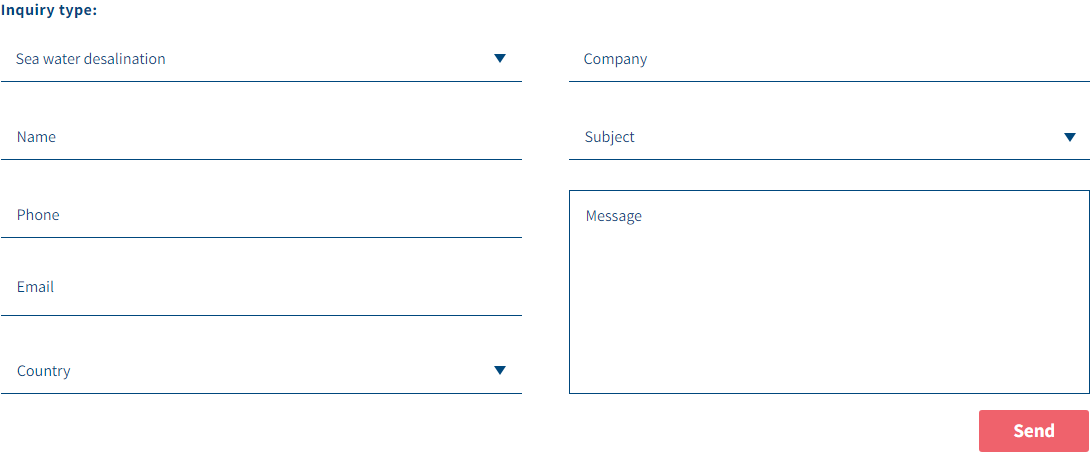What is PFAS?
Per- and polyfluoroalkyl substances (PFAS) are a group of more than 7000 widely used synthetic, man-made chemicals. They all contain carbon-fluorine bonds, which are one of the strongest chemical bonds in organic chemistry. They are also not easily degradable and remain in the environment, thus widely considered as “forever chemicals”. PFAS accumulate in animal and human tissue and are toxic at low levels of bioaccumulation, can cause problems to the endocrine nervous system and several other health problems.
Clean, safe drinking water is fundamental to life, communities, and people. The US EPA (Environmental Protection Agency) has taken an extraordinary step, a first in 26 years, proposing legal drinking water limits for contaminants in drinking water. Municipal utilities will be required to remove six of the most studied and toxic PFAS compounds from drinking water.
National Primary Drinking Water Regulation (NPDWR)
EPA expects that in years the final rule will prevent PFAS exposure in drinking water for approximately 100 million people, prevent thousands of deaths, and reduce tens of thousands of serious PFAS-attributable illnesses.
The new EPA regulations set Maximum Contaminant Levels (MCLs) for PFOA (perfluorooctanoic acid) and PFOS (perfluorooctane sulfonic acid) at 4 parts per trillion (ppt); PFNA (perfluorononanoic acid), PFHxS (perfluorohexanesulfonic acid), and GenX (hexafluoroproplene oxide) at 10 ppt; and a hazard index for mixtures of PFNA, PFHxS, GenX and PFBS.
Water Systems in the US are required to start testing for these six compounds within three years, report the results in the annual Water Quality Report, and notify customers of any violations. Systems have five years to comply with the new MCLs by either installing appropriate treatment or finding alternative PFAS-free water supplies.
To successfully adhere to the new PFAS regulations, EPA has identified the following as best-of-breed technologies:
- Granular activated carbon (GAC)
- Anion Exchange (AIX)
- Nanofiltration (NF)
- Reverse Osmosis (RO)
PFAS Regulations in Europe
In Europe, PFOS & PFOA were phased out and are now restricted under the EU POP (Persistent Organic Pollutants) regulations making manufacture, import and export largely prohibited. In late 2020 the EU Quality of Water Directive was amended to minimize PFOS & PFOA levels in drinking water. According to the directive, each member state must enforce the regulation by 2026.
PFAS Removal Technologies
PFAS are found in rivers, lakes, and reservoirs all over the world. The most common types of PFAS detected are perfluorooctanoic acid (PFOA) and perfluorooctane sulfonic acid (PFOS), which have already been phased out of production in Europe and the United States. The highest levels of PFAS contamination are found in industrial and urban areas, as well as in areas with a high population density.
PFAS projects include:
Cleanup of municipal wastewater treatment water, before discharge (recycling back into the environment)
Cleanup of industrial wastewater before discharge into a receiving body
Treatment of municipal drinking water that has been contaminated with PFAS.
At IDE we offer a complete range of removal solutions:
Carbon Adsorption – GAC
Specialty anion Ion Exchange resin
Reverse osmosis or nanofiltration
Other typical water purification techniques, include biodegradation, micron filtration, sand filtration, ultrafiltration, coagulation, flocculation, clarification, and oxidation by ultraviolet light, hypochlorite, chlorine dioxide, chloramine, ozone, or permanganate, are not able to effectively remove PFAS from water/wastewater.
Granular Activated Carbon (GAC):
GAC can remove low concentrations (ng/L) of PFAS from drinking water. The GAC efficiently treats longer PFAS chains and is less efficient for treating short-chain PFAS. The presence of other organic matter may reduce the GAC adsorption efficiency. The carbon media may be recycled for use elsewhere after the PFAS is burned off.
Ion Exchanger (IX):
An ion exchanger is efficient for the removal of anionic and long-chain PFAS at low concentrations (ng/L). Adsorption capacity is higher compared to GAC and the adsorption kinetics is faster. It is less efficient for water containing organic or inorganic matter and is limited to the removal of short-chain PFAS. The media is typically used once and incinerated but the resin lasts a long time, so the economics are attractive.
Membrane (RO/NF):
Membrane technology is effective for short-chain as well as long-chain PFAS, has a high removal rate is time efficient. Other organic and inorganic impurities are also removed. The energy requirement for membrane wastewater treatment is high compared to adsorption or ion exchange resin.








